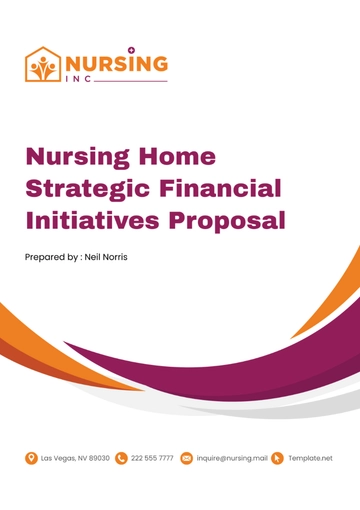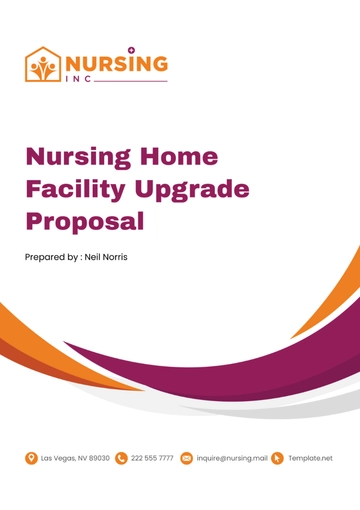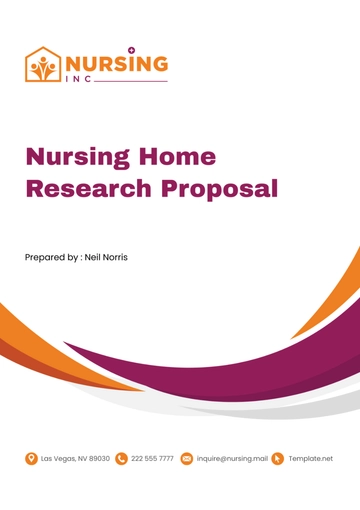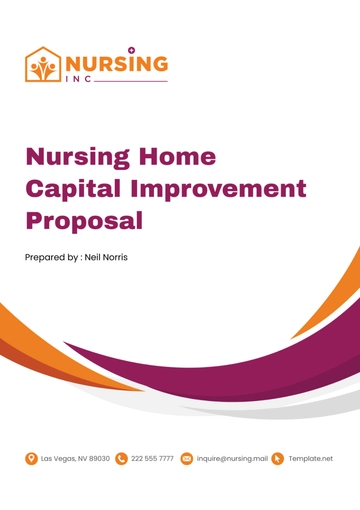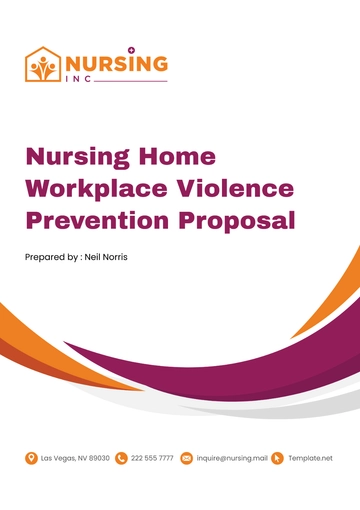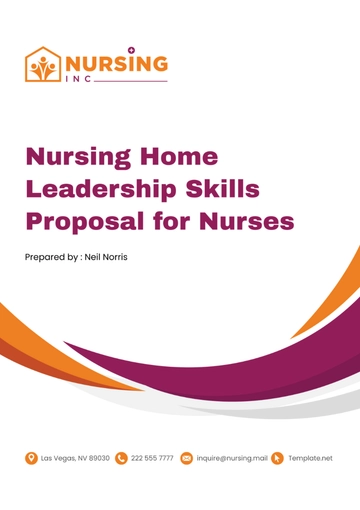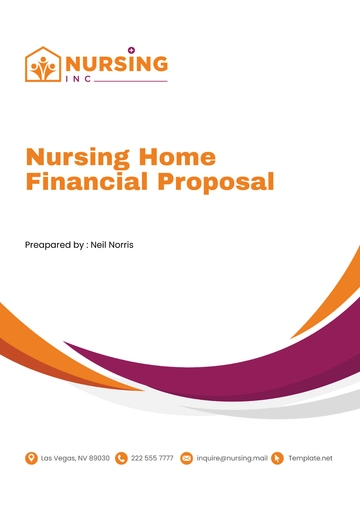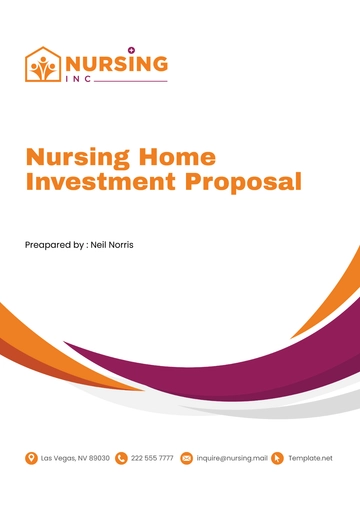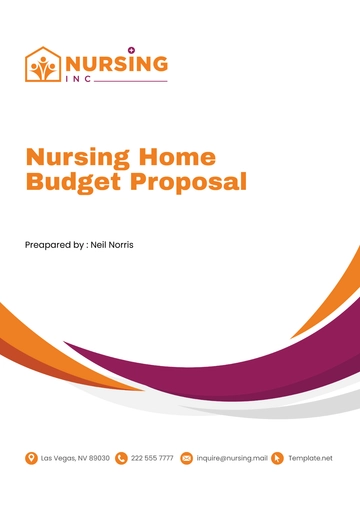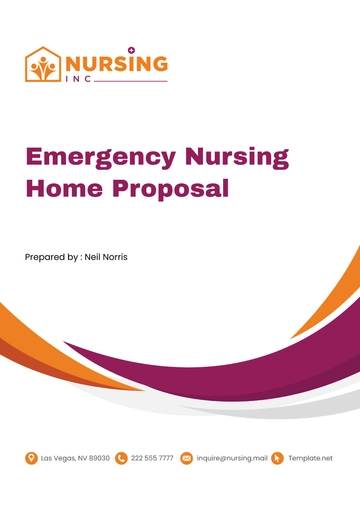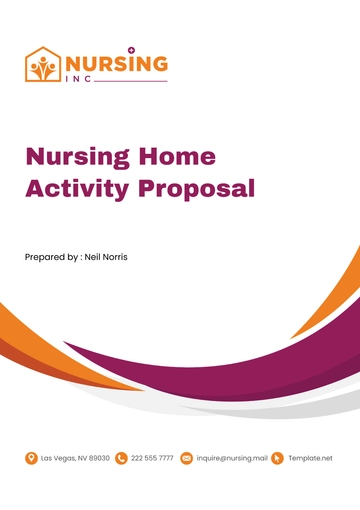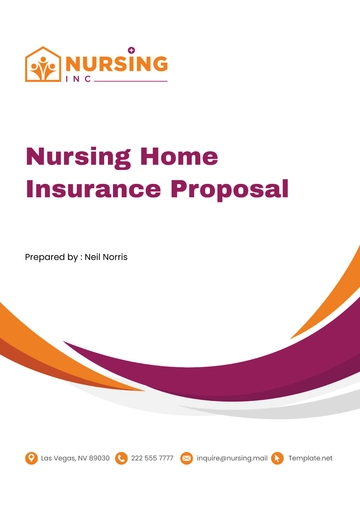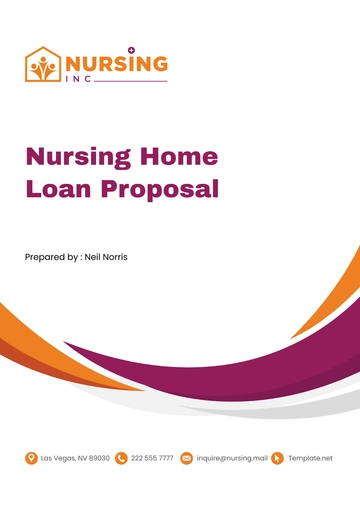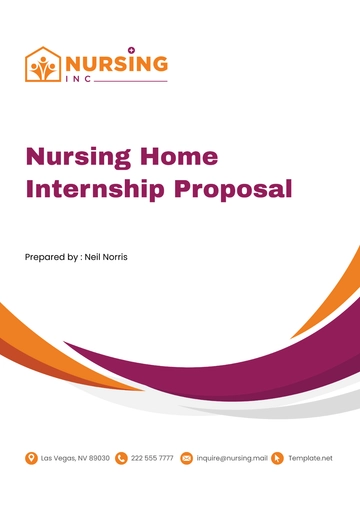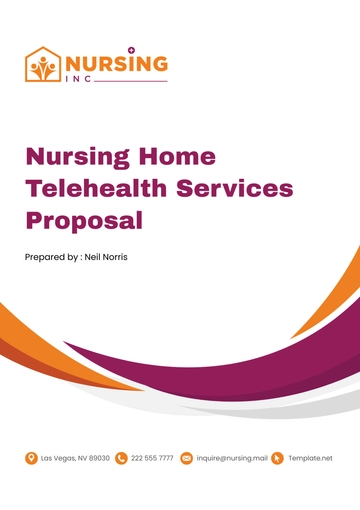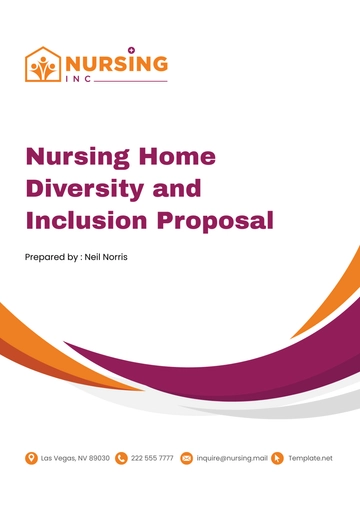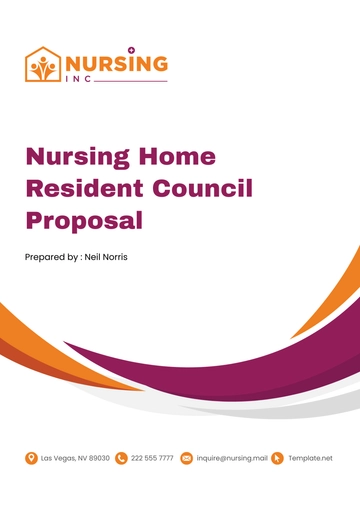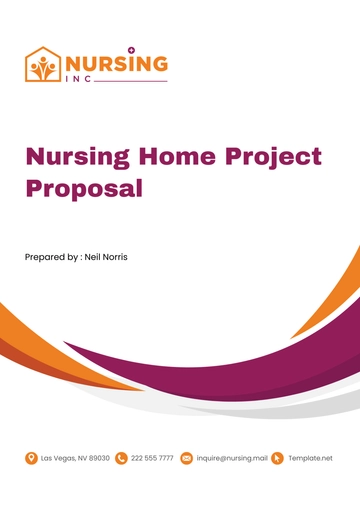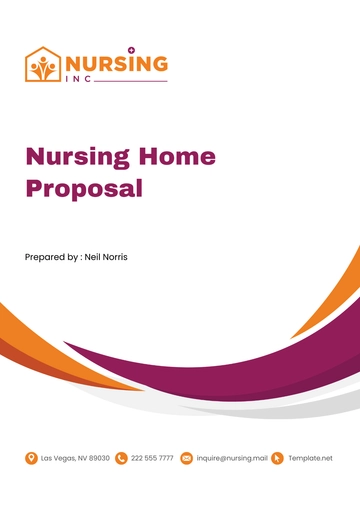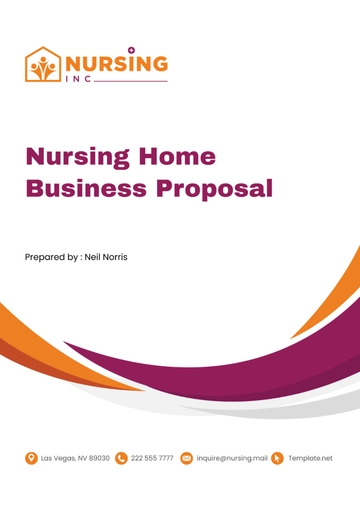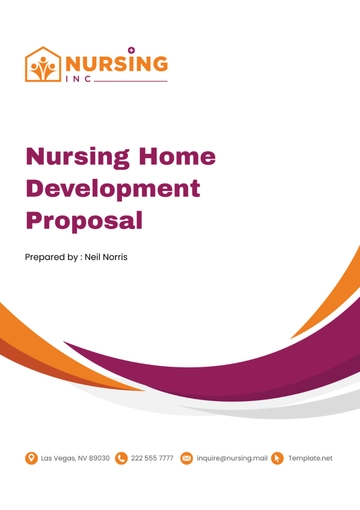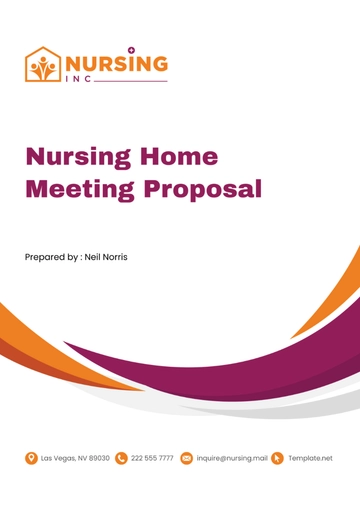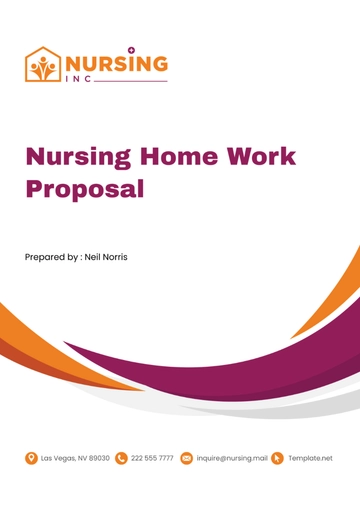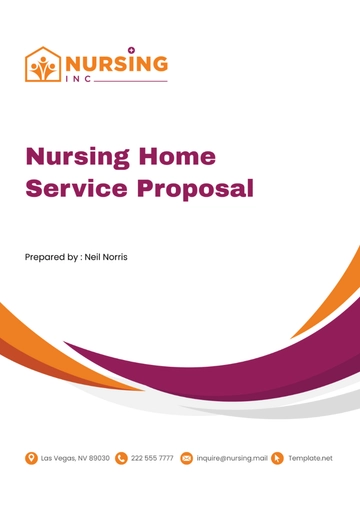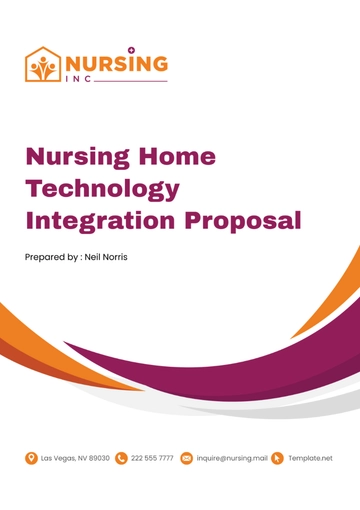Free Nursing Home Facility Upgrade Proposal

I. Executive Summary
This proposal outlines the essential facility upgrades needed to enhance the overall environment and functionality of our nursing home. The goal of these upgrades is to address current deficiencies that limit our ability to provide the highest standard of care and improve operational efficiency. By modernizing our facilities and equipment, we aim to meet the increasing demands of healthcare services for our aging population. Expected outcomes of the upgrades:
Improved safety and accessibility for residents and staff.
Enhanced quality of resident care through upgraded medical and recreational facilities.
Increased operational efficiency with updated technology and infrastructure.
Compliance with the latest health and safety regulations.
II. Introduction
A. Purpose
The purpose of this proposal is to secure approval and funding for necessary upgrades to our nursing home facilities. These enhancements are critical to meet the evolving needs of our residents and staff, ensure compliance with regulatory standards, and maintain our reputation as a leading provider of elderly care services.
B. Background of Nursing Home
Our nursing home was established two decades ago and currently serves up to 150 residents. We offer a range of services including long-term care, rehabilitation, and specialized memory care. Despite our commitment to quality care, our facilities have become outdated, affecting our ability to serve our residents effectively. This proposal seeks to address these issues through targeted upgrades.
III. Needs Assessment
A thorough assessment of our facilities has identified several areas in need of improvement to continue providing excellent care and meet future demands.
Area | Identified Needs |
Building Infrastructure | Modernization of resident rooms, improved accessibility |
Medical Equipment | Up-to-date medical devices for enhanced resident care |
IT Systems | Upgraded software and hardware for better data management |
Safety Systems | Enhanced fire safety and security systems |
Recreational Facilities | Updated recreational areas for improved resident engagement |
Building Infrastructure: Many of our resident rooms lack the necessary features for modern care standards, such as accessible bathrooms and wider doorways. Upgrading these aspects will improve the quality of life for our residents and comply with accessibility regulations.
Medical Equipment: Current medical devices and tools are outdated, which can compromise the quality of care. New, state-of-the-art equipment will enhance treatment capabilities and resident outcomes.
IT Systems: Our existing IT infrastructure is insufficient for today’s data-heavy healthcare environment. Enhancing our IT systems will improve record keeping, resident data management, and operational efficiency.
Safety Systems: The existing fire safety and security systems do not meet the latest standards. Upgrading these systems is critical to ensure the safety and security of our residents and staff.
Recreational Facilities: Current recreational spaces are not engaging or adequately equipped to meet the diverse needs of our residents, impacting their overall well-being and satisfaction.
IV. Proposed Upgrades
To address the identified needs and ensure our nursing home meets current and future demands, we propose a series of targeted upgrades. These enhancements are carefully chosen to improve the quality of life for our residents, ensure safety, and streamline our operations.
A. Building Infrastructure Upgrades
The modernization of our resident rooms and common areas is essential to meet current accessibility and comfort standards. By redesigning these spaces, we can ensure that they are more accommodating for mobility-impaired residents and conducive to delivering high-quality care. Expected benefits include:
Enhanced safety and comfort for residents.
Compliance with ADA standards for accessibility.
Increased satisfaction among residents and their families.
B. Medical Equipment Upgrades
Investing in the latest medical technology is crucial to providing top-tier healthcare. New equipment such as advanced patient monitoring systems and rehabilitation tools will enable us to offer better care and improve treatment outcomes. Expected benefits include:
Improved accuracy and efficiency in resident care.
Enhanced capabilities for handling complex health conditions.
Reduction in recovery times and improvement in overall health outcomes.
C. IT Systems Enhancement
Upgrading our IT systems is necessary to handle the increasing amount of health data securely and efficiently. Enhanced software and hardware will support better data management, streamline communication, and facilitate compliance with health information regulations. Expected benefits include:
More efficient data processing and access.
Improved security of sensitive resident information.
Enhanced communication across departments and with external healthcare providers.
D. Safety Systems Overhaul
Upgrading our fire safety and security systems is imperative to protect our residents from potential hazards. Modern fire suppression systems and upgraded security technologies, including surveillance cameras and secure access controls, will significantly enhance safety. Expected benefits include:
Increased safety for all residents and staff.
Compliance with the latest fire safety and security regulations.
Peace of mind for residents and their families.
E. Recreational Facilities Improvement
Revitalizing our recreational areas will provide residents with engaging and stimulating environments. New equipment and redesigned spaces will cater to a variety of interests and abilities, promoting physical activity and social interaction among residents. Expected benefits include:
Improved mental and physical well-being of residents.
Enhanced social interaction and community feeling.
Increased attractiveness of our facility to prospective residents.
V. Budget and Funding
A detailed budget is essential for planning and executing the proposed upgrades effectively. This section outlines the financial requirements for each upgrade, ensuring transparency and accountability in how funds will be allocated.
Funding for these upgrades will be sourced from a combination of grants, existing capital reserves, and potential loans. We will apply for grants specifically available for healthcare facility improvements and elder care. Additionally, part of our annual budget allocation will be redirected to support this initiative. If necessary, we will explore loan options with favorable terms to cover any shortfall.
The total investment in facility upgrades is expected to yield significant long-term benefits. Improved facility standards and new medical equipment will attract more residents, increasing our revenue. Enhanced IT systems will reduce operational costs by improving efficiency. Upgraded safety and recreational facilities will not only enhance resident satisfaction and safety but also reduce liability risks. Overall, the projected increase in revenue and decrease in operational costs from these upgrades are expected to offset the initial investment within five years.
VI. Implementation Plan
The successful implementation of our facility upgrades requires careful planning and coordination. The following table outlines the key steps, timelines, and personnel involved in the upgrade process.
Step | Timeline | Key Personnel |
Finalize design plans | Month 1-3 | Project Manager |
Procure materials and equipment | Month 4-6 | Procurement Manager |
Begin construction/upgrades | Month 7-9 | Construction Manager |
Install medical equipment | Month 10 | Medical Director |
Upgrade IT systems | Month 11 | IT Director |
Test and finalize all systems | Month 12 | Safety Officer |
VII. Risk Analysis
In planning our facility upgrades, it is crucial to identify potential risks and develop mitigation strategies to ensure the project progresses smoothly and efficiently. This risk analysis helps to preemptively address challenges that may arise during the implementation of the upgrades.
Risk | Likelihood | Impact | Mitigation Strategy |
Cost Overruns | Medium | High | Strict budget monitoring and contingency planning |
Delays in Supply Chain | High | Medium | Establish agreements with multiple suppliers |
Disruption to Operations | High | High | Implement upgrades in phases to minimize impact |
Compliance Issues | Low | High | Regular reviews with legal counsel to ensure adherence |
Technology Integration | Medium | Medium | Pilot testing before full implementation |
VIII. Regulatory Compliance
Compliance with regulatory standards is paramount in the healthcare industry, especially when modifying facilities that care for vulnerable populations. We are committed to adhering to all applicable laws to ensure the safety and well-being of our residents and staff.
Americans with Disabilities Act (ADA)
Health Insurance Portability and Accountability Act (HIPAA)
Occupational Safety and Health Administration (OSHA) standards
Centers for Medicare & Medicaid Services (CMS) regulations
National Fire Protection Association (NFPA) codes
IX. Evaluation and Metrics
To measure the success of the facility upgrades, specific performance metrics have been identified. These metrics will help us evaluate the effectiveness of the upgrades and identify areas for further improvement.
Metric | Target Value |
Resident Satisfaction Scores | Increase by 20% |
Operational Efficiency Gains | 15% reduction in processing time |
Safety Incident Reports | Decrease by 30% |
Energy Usage | Reduce by 25% |
Staff Turnover Rates | Decrease by 10% |
Evaluations will be conducted annually, with the first evaluation occurring one year after the completion of the upgrades. Regular monitoring will also be implemented to track ongoing performance against these metrics.
X. Conclusion
In conclusion, this proposal outlines a strategic approach to significantly upgrade our facility, enhancing the quality of care and operational efficiency. We urge all stakeholders to review this proposal and support its implementation. By investing in our facility, we are investing in the well-being of our residents and the future of our community. Together, we can achieve a standard of care and service that sets us apart as a leader in the healthcare industry.
- 100% Customizable, free editor
- Access 1 Million+ Templates, photo’s & graphics
- Download or share as a template
- Click and replace photos, graphics, text, backgrounds
- Resize, crop, AI write & more
- Access advanced editor
This Nursing Home Facility Upgrade Proposal Template from Template.net empowers you to clearly outline and present upgrade needs and solutions for your facility. Fully editable and customizable, this template is structured to detail each proposal aspect, editable in our AI Editor tool. Secure the necessary approvals and funding with this comprehensive upgrade proposal template.
You may also like
- Business Proposal
- Research Proposal
- Proposal Request
- Project Proposal
- Grant Proposal
- Photography Proposal
- Job Proposal
- Budget Proposal
- Marketing Proposal
- Branding Proposal
- Advertising Proposal
- Sales Proposal
- Startup Proposal
- Event Proposal
- Creative Proposal
- Restaurant Proposal
- Blank Proposal
- One Page Proposal
- Proposal Report
- IT Proposal
- Non Profit Proposal
- Training Proposal
- Construction Proposal
- School Proposal
- Cleaning Proposal
- Contract Proposal
- HR Proposal
- Travel Agency Proposal
- Small Business Proposal
- Investment Proposal
- Bid Proposal
- Retail Business Proposal
- Sponsorship Proposal
- Academic Proposal
- Partnership Proposal
- Work Proposal
- Agency Proposal
- University Proposal
- Accounting Proposal
- Real Estate Proposal
- Hotel Proposal
- Product Proposal
- Advertising Agency Proposal
- Development Proposal
- Loan Proposal
- Website Proposal
- Nursing Home Proposal
- Financial Proposal
- Salon Proposal
- Freelancer Proposal
- Funding Proposal
- Work from Home Proposal
- Company Proposal
- Consulting Proposal
- Educational Proposal
- Construction Bid Proposal
- Interior Design Proposal
- New Product Proposal
- Sports Proposal
- Corporate Proposal
- Food Proposal
- Property Proposal
- Maintenance Proposal
- Purchase Proposal
- Rental Proposal
- Recruitment Proposal
- Social Media Proposal
- Travel Proposal
- Trip Proposal
- Software Proposal
- Conference Proposal
- Graphic Design Proposal
- Law Firm Proposal
- Medical Proposal
- Music Proposal
- Pricing Proposal
- SEO Proposal
- Strategy Proposal
- Technical Proposal
- Coaching Proposal
- Ecommerce Proposal
- Fundraising Proposal
- Landscaping Proposal
- Charity Proposal
- Contractor Proposal
- Exhibition Proposal
- Art Proposal
- Mobile Proposal
- Equipment Proposal
- Student Proposal
- Engineering Proposal
- Business Proposal
